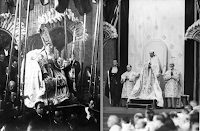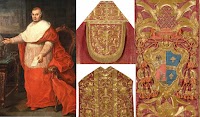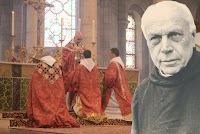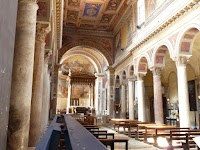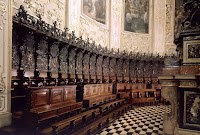 My favorite Catholic architect is the Franco-American Emmanuel Louis Masqueray (1861-1917). In his day he was one of the most noted architects in the country. When I was a boy my father drove me by his grave at Calvary Cemetery in St. Paul, Minnesota. We got out of the c…
My favorite Catholic architect is the Franco-American Emmanuel Louis Masqueray (1861-1917). In his day he was one of the most noted architects in the country. When I was a boy my father drove me by his grave at Calvary Cemetery in St. Paul, Minnesota. We got out of the c…
Our Advertising Partners
-
The global pandemic has disrupted the normal celebration of the Holy Week in Spain, where, for a second year, the government has forbidden t...
-
To the person who simply enjoys beautiful art and architecture, distinctions like "baroque" or "rococo" might seem overl...
-
We live in a very visual, image-based culture and, what's more, there is always lots of curiosity around the matter of traditional papal...
-
The earliest pictorial representations of the Baptism of the Lord were carved in stone, on Christian sarcophagi. Later, during the long Mid...
-
The mitre is one of the most recognizable symbols of prelates of the Church, specifically of bishops up to the Roman pontiff himself -- thou...
-
In a previous article we considered what the exterior of Old St. Peter's was like and today we will turn our attention to the interio...
Blog Archive
-
▼
2022
(261)
-
▼
December
(22)
- Catholic Ecclesiastical Architect: E.L. Masqueray
- Traditions of the Solemn Papal Mass: Canonization ...
- The Orsini Mitres (Pope Benedict XIII)
- Vestments of Cardinal Gian Carlo Bandi, Nephew of ...
- Dom Lambert Beauduin's 1914 Programme for (Genuine...
- Book Review: The Once and Future Roman Rite by Dr....
- Paleochristian Baptismal Pools from Roman Tunisia
- An "Everyday" Solemn Mass Set from Renaissance Flo...
- The Altar and Its Canopy: The Tester
- The Oratorian Church of Santo Tomas y de San Felip...
- The Church of the Immaculate Heart of Mary (Brompt...
- An Antependium of the Duomo di Grosseto Featuring ...
- Minor Roman Basilicas: San Saba
- A Papal Mantum of Pope Benedict XV
- Marian Offerings from Altarworthy Vestments
- Minor Roman Basilicas: San Nicola in Carcere
- Mitre and Chasuble of Pope Pius IX Used at the Fir...
- Choir of the Cathedral of S. Alessandro Martire in...
- St. Raphael’s Cathedral: A Proposal by Michael Bursch
- A Brief Review of the History, Function and Forms ...
- The Formale
- Liturgical Art as Visible Signs of Continuity
-
▼
December
(22)
Donate
Copyright ©
Liturgical Arts Journal | Powered by Blogger












